I'm trying to work with a texture atlas and the canvas tag to do some animation. I don't get any errors but all I am seeing is the last frame. Is there something I should be doing so I see all the "frames"?
I have tested this with hard coding the x/y coordinates on the texture atlas so I know I can cruise around it.
Here's my code:
<!DOCTYPE html PUBLIC "-//W3C//DTD XHTML 1.0 Transitional//EN" "http://www.w3.org/TR/xhtml1/DTD/xhtml1-transitional.dtd">
<html lang="en">
<head>
<meta charset="utf-8">
<title>Canvas Animation</title>
<!-- meta tags -->
<meta name="keywords" content="">
<meta name="description" content="">
<!-- javascript -->
<script language="javascript">
var textureAtlas = new Image();
var moeImg = new Image();
function init() {
animateProps = new Array;
textureAtlas.src = "images/textureatlast1.png";
moeImg.src = "images/moe.jpg";
var textureAtlasCoords = new Array("0,0", "100,0", "200,0", "300,0", "400,0", "500,0", "600,0");
for(var c=0; c<textureAtlasCoords.length; c++) {
animateObj = new Object();
var thisCoord = textureAtlasCoords[c];
var thisCoordSplit = thisCoord.split(",");
var thisX = thisCoordSplit[0];
var thisY = thisCoordSplit[1];
//var a = setTimeout(Function(){animate(ctx, textureAtlas, thisX, thisY)},1000);
animateObj['canvasId'] = "princessAnimation";
animateObj['imgsrc'] = textureAtlas;
animateObj['x'] = thisX;
animateObj['y'] = thisY;
animateProps.push(animateObj);
var a = setInterval(function(){animate(animateProps);},1000);
}
clearInterval(a);
}
function imgDraw(ctx, thisImg) {
console.log(thisImg);
//(image, x(
ctx.drawImage(thisImg,0,0, 1024, 451, 0, 0, 1024, 451);
}
function animate() {
//get animation properties
for(thisProp in animateProps) {
var canvasId = animateProps[thisProp]['canvasId'];
var thisImg = animateProps[thisProp]['imgsrc'];
var thisX = animateProps[thisProp]['x'];
var thisY = animateProps[thisProp]['y'];
}
var canvas = document.getElementById(canvasId);
if (canvas.getContext){
var ctx = canvas.getContext('2d');
ctx.clearRect(0,0,1024,451);
ctx.drawImage(thisImg,thisX,thisY, 1024, 451, 0, 0, 1024, 451);
}
}
</script>
<!-- stylesheets -->
<!--conditional comments -->
</head>
<body onload="init();">
<div id="animationWrapper">
<canvas width="100" height="150" id="princessAnimation"></canvas>
</div>
</body>
</html>
Here's the image I am working with (Note: I know my coordinates are off per the file, right now I am just trying to get the transition to work, I'll then fine tune the x/y coordinates (of course unless you want to do that for me. : D )
